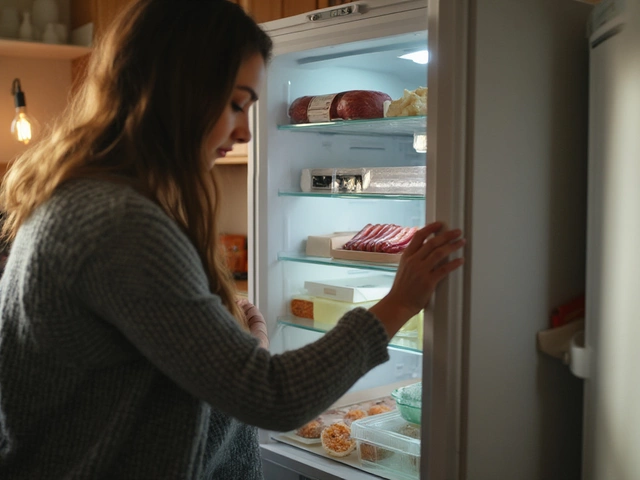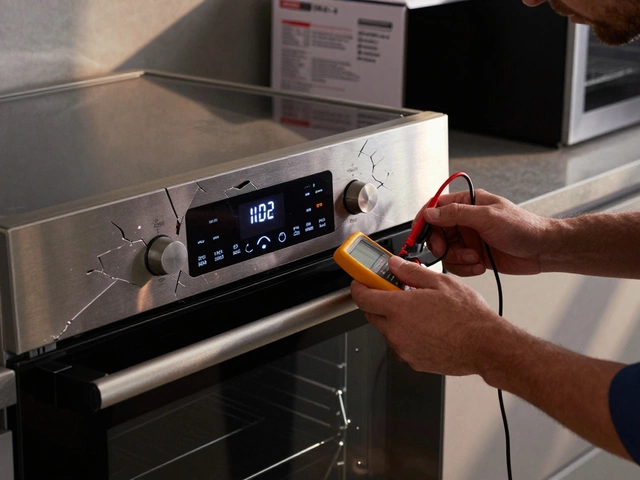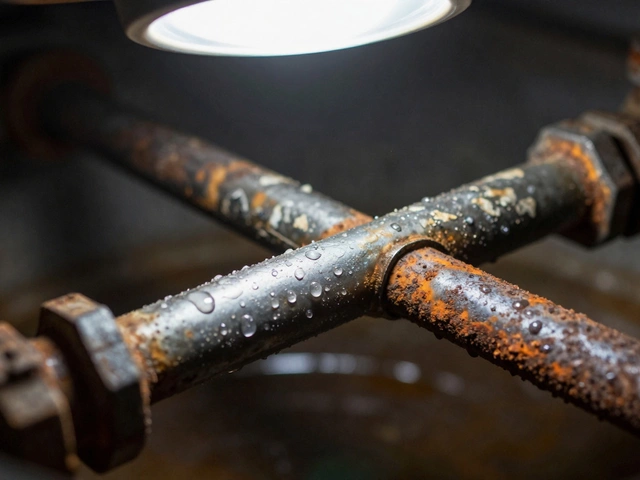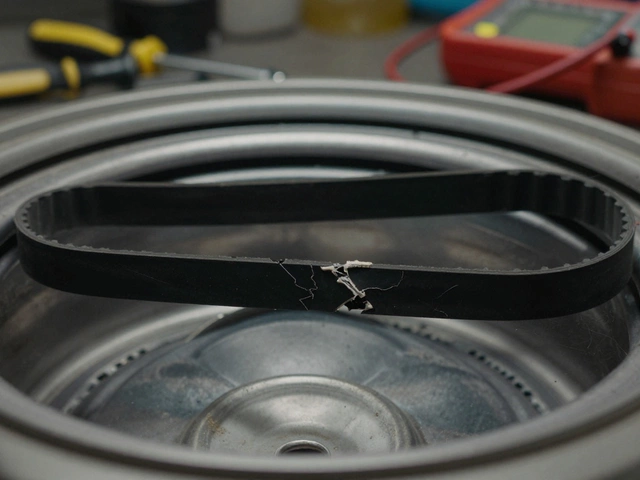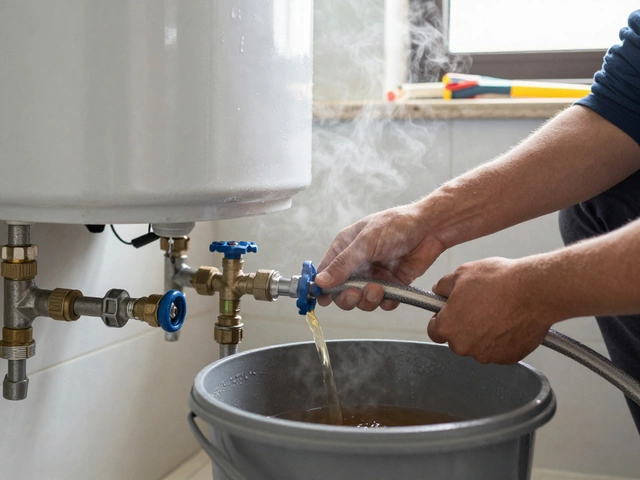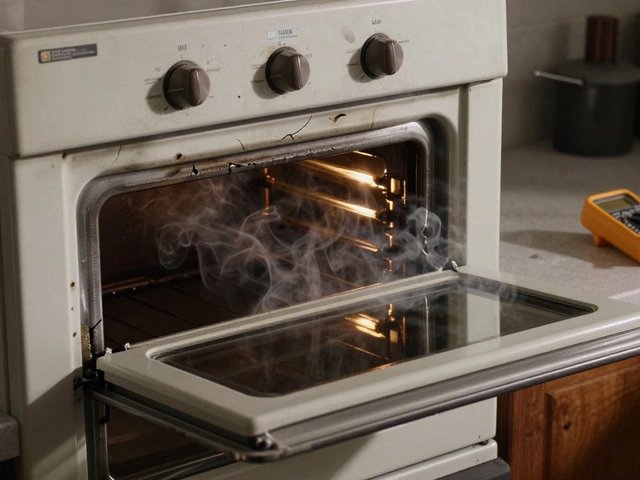If you've ever opened your freezer expecting solid ice and instead been met with a slushy mess, you're not alone. A runaway freezer temperature can be a frustrating problem, especially when it jeopardizes the freshness of your food. Luckily, it's a complaint with solutions as varied as the symptoms themselves.
In this guide, we'll walk you through the most common causes of this chilling issue. From misconfigured settings to air flow disruptions, you'll find a range of diagnostics and DIY fixes to get your freezer back on ice. Stick around—you might just discover a few tricks that’ll save you from that dreaded thaw.
- Understanding Temperature Settings
- Recognizing Mechanical Failures
- Addressing Seal and Airflow Problems
- DIY Maintenance Tips
Understanding Temperature Settings
When your freezer isn’t keeping things icy, the first suspect should often be the temperature settings. Most people tend to overlook this simple yet crucial aspect. Start by checking the thermostat settings on your freezer. Ensure it’s set to the recommended setting, usually around 0 degrees Fahrenheit (-18 degrees Celsius). This temperature ensures food remains frozen thoroughly, preserving both quality and safety. It might be tempting to adjust it lower during hot summer days or during heavy usage periods like the holidays, but remember that each degree counts.
Manufacturers provide these settings taking into account various factors including energy efficiency. It’s worth noting that freezers can take several hours to adjust to a new setting. If you find the setting incorrect, make a small adjustment and give the appliance at least 24 hours to stabilize before making further changes. Often, when freezers are overstuffed, cold air circulation becomes hampered. This congestion may trick the thermostat, making it ‘think’ the internal environment is colder than it really is. Keep the items spaced out so that air can flow freely.
According to a report from the U.S. Department of Energy, optimizing your freezer settings can reduce your energy consumption significantly, by up to 10%, which translates to savings.
"Maintaining the right temperature setting is not just about preserving food, it’s also a key factor in overall appliance efficiency," says appliance expert Jon Beasley. "It can be the difference between high energy bills and substantial savings."Equally important is monitoring the external climate where the freezer is located. Freezers in garages or unheated areas may struggle during temperature extremes, leading to false thermostat readings.
Additionally, consider if your freezer offers a 'quick freeze' function. This is handy for temporarily adjusting the temperature when adding newly stored, non-frozen items, especially if adding in large quantities. Yet, this is not a set-it-and-forget-it feature, so remember to switch it off once adequate freezing is achieved. Freezers with digital controls might give you more precise control over the settings, but analog dial thermostats require patience and finesse to get just right. Regardless of type, regular checks and awareness can extend the life of your freezer and save both money and food in the process.
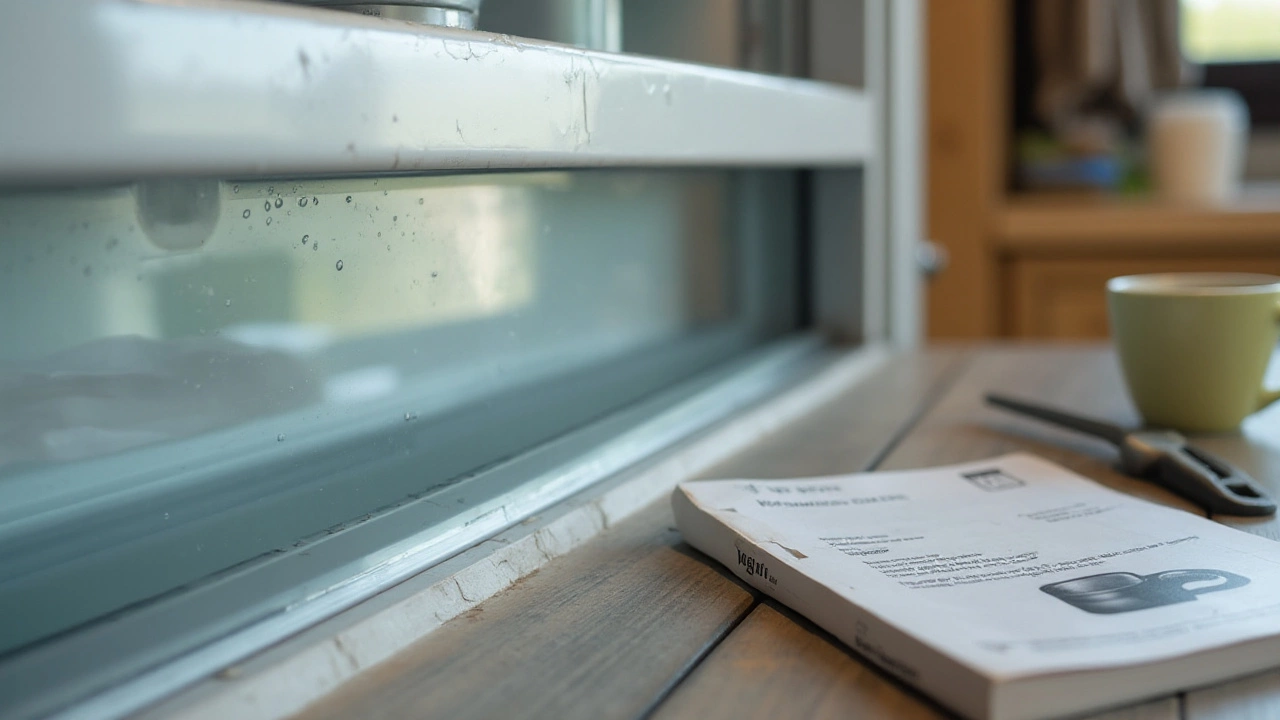
Recognizing Mechanical Failures
Freezers are the unsung heroes of modern kitchens, diligently keeping our foods preserved day in, day out. But even these resilient machines can encounter mechanical setbacks. Knowing how to spot these failures is crucial in maintaining the efficiency and longevity of your freezer. Unlike a quick fix for a tricky door seal, mechanical failures often require a bit more sleuthing.
One of the major culprits of a freezer not maintaining its chill is the compressor. Think of the compressor as the heart of your freezer; if it's working improperly, the battle for temperatures plummeting below freezing is lost. A malfunctioning compressor may emit unusual sounds or run continuously, trying yet failing to regulate the temperature. If you catch these symptoms, it might be time to call in the pros. A compressor issue is not just a shortcut to a warmer freezer; it's also a potential stake in the heart of your electricity bill.
Another often-overlooked mechanical issue is with the evaporator fan. This small fan is critical as it circulates cold air throughout the freezer. When the air doesn't flow properly, some areas might be cold while others resemble a tropical breeze. If you hear a rattling or whining noise when your freezer's compressor kicks on, it might be a sign that the fan blade is obstructed or the motor is on its last legs. Faulty evaporator fans are notoriously tricky since they can mean tearing apart the freezer's insides, a task best left to those comfortable wielding a screwdriver and repair manual.
According to Ronald Maxwell, a respected refrigeration expert, "Regular maintenance checks can prolong the life of your appliance tenfold, saving you from the high costs of major repairs."
And that's not all. The condenser coils, usually located at the bottom or behind the freezer, are pivotal for heat exchange. When these coils become caked with dust or debris, they can't expel heat efficiently, undermining the whole cooling process. Cleaning condenser coils is one of the simplest DIY fixes; armed with a vacuum cleaner and a coil brush, you can often resolve this issue in less than an hour.
Identifying Thermostat and Sensor Issues
Your freezer's thermostat and temperature sensor are the brain and nerves that dictate its cooling acuity. If the thermostat is misreading, the compressor might not be receiving the necessary signals to kick into high gear, leaving your ice cream a runny mess. A quick way to test this is to turn the thermostat from the coldest setting back to the warmest and then back down. Listen for a click or the compressor activating. If you find gaps in operation, it might be the thermostat causing a malfunction—a detail easy to miss without focused investigation.
However, if you're encountering persistent mechanical problems, a documented guide or professional diagnostic might be necessary. For avid DIY enthusiasts, consulting your freezer's manual can provide a trove of hidden insights about specific parts or error codes. Remember, positing against potential risks of electric shock or additional damages is only wise should you find yourself treading unfamiliar waters. Recognizing these mechanical failures isn't just about spotting the problem—it's about seeing the bigger picture of how your appliance works, maintaining that essential home utility without heartbreak.

Addressing Seal and Airflow Problems
The efficiency of your freezer largely depends on its ability to maintain a consistent climate, and this can be heavily impacted by the integrity of the door seal or gasket. A compromised seal allows warm air to seep in, causing cooling inefficiencies and leading to frost build-up that interferes with your fridge maintenance efforts. Begin by inspecting the rubber seal for any visible tears or warping. Cleaning the gasket with a mixture of vinegar and water not only removes grime but also helps restore its elasticity, which is critical for a tight seal. You might be surprised to learn that even a small gap can undo all the hard work of your compressor.
Keeping airflow pathways clear is just as vital. The vents inside your freezer must remain unobstructed to allow cool air to circulate freely. This is often overlooked, as stacking food items tends to block these pathways over time. Taking a few moments to rearrange the contents every once in a while can ensure that air moves as it should. If airflow doesn’t seem to improve, checking the evaporator fan motor could be the next step. Signs of malfunction include unusual sounds or lack of activity altogether. Remember, based on a study from the Refrigeration Research Foundation, “Proper airflow is key to efficient appliance operation and can decrease energy usage by up to 15%.”
Let’s also consider the role of temperature sensors. Modern freezers often rely on these sensors to regulate the cooling cycle. If a sensor is misreading due to location or dysfunction, it might trigger the wrong response, pushing the compressor into overdrive or causing it to shut down prematurely. It's a good practice to ensure that sensors are clean and free from any obstructions like ice or leftover product wrappers. Repositioning or recalibrating these sensors requires a bit of technical handiness, but manufacturers usually provide detailed guides in their manuals.
Steps to Enhance Seal Effectiveness
- First, give the gasket a thorough clean with a mix of dish soap and water. This not only aids in dirt removal but also enhances flexibility.
- For ripped gaskets, replace promptly to avoid any cold air leakage. Most appliance stores stock these, or you can find them online.
- If you notice frost build-up, that might indicate a sealing issue. Use a dollar bill trick: close the door on a bill. If you can pull it out without resistance, it's time for a repair or replacement.
Ultimately, your appliance tips wouldn’t be complete without a nod to regular inspections. Setting a reminder to inspect your freezer every few months can curb potential issues before they escalate. Consider jotting down observations each time, as patterns might help identify recurring problems. By staying proactive with these steps, your freezer will reward you with optimal performance and fewer surprises.
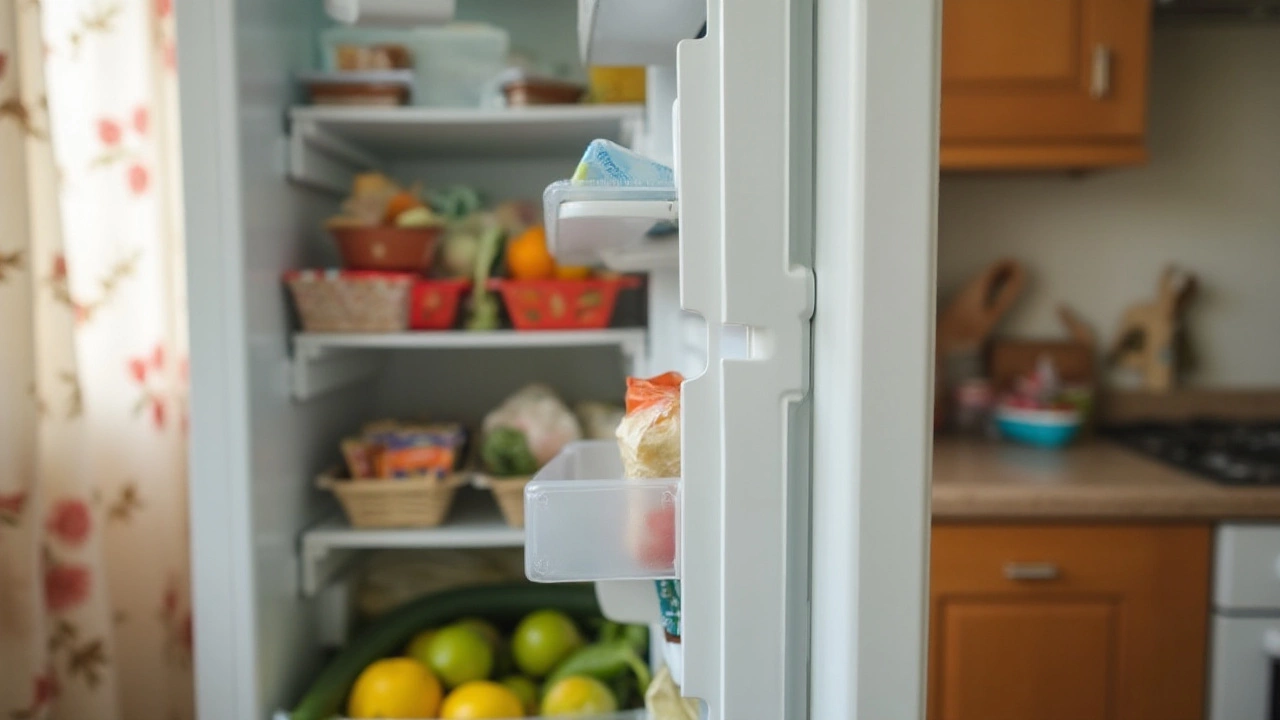
DIY Maintenance Tips
When it comes to keeping your freezer running smoothly, a bit of regular upkeep can go a long way. Not only does maintenance help you avoid expensive repairs down the line, but it also keeps your food fresh and safe. One crucial tip is to regularly check the temperature settings. Most freezers need to be set at 0°F (-18°C) for optimal performance. Stray from this range, and you might find yourself faced with frostbitten ice cream or questionable ground beef. A digital thermometer can be a useful tool to ensure your appliance is set correctly, providing an accurate read without needing to open the door too often.
The next step in appliance tips is to inspect the door seals for wear and tear. A faulty seal allows outside air to leak into the freezer, forcing the compressor to work overtime and potentially leading to uneven temperatures and increased energy bills. A handy trick to test the seal is the 'dollar bill trick'. Close the door on a bill; if you can easily pull it out, it’s time to replace the gasket. Making this small repair can save both energy and money, as well as extend the life of the freezer itself.
Cleaning and ensuring proper airflow is another vital aspect of freezer maintenance. Dust and dirt can accumulate on the condenser coils, effectively insulating them and preventing them from releasing heat. By gently vacuuming or brushing the coils, you can improve the efficiency of your fridge, which in turn assists in maintaining an even temperature inside. Depending on your model, the coils might be located at the back or beneath the freezer. Consult your freezer's manual if you're unsure where to find them.
"Regular appliance maintenance is key to energy efficiency in the home," notes Energy Star, a trusted authority in energy conservation.
In addition, defrosting your freezer periodically—especially if it’s an older model without automatic defrost—can prevent ice buildup that can insulate the internal thermometer, making it less effective. Aim to defrost when the ice is about a quarter-inch thick. Doing so will improve your freezer's capacity and efficiency significantly.
Lastly, pay attention to the spacing of items within your freezer. Over-packing can restrict airflow, making it hard for the unit to evenly chill the contents. Aim to leave some space between items for air circulation. Utilize baskets or bins to organize similar items and make the retrieval process seamless. Implementing structured organization can also help prevent the unfortunate occurrence of forgotten freezer-burned products, ensuring you make the most of your grocery budget.



